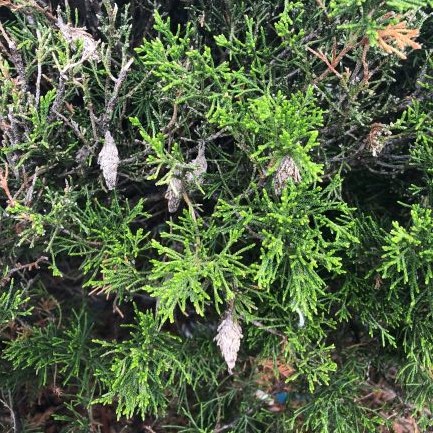Coniferous, or evergreen, plant material in the residential landscape are often renowned for attracting bagworms to their needles or stems. While evergreen species are popular choices for these unattractive insects, bagworms are showing to be less and less picky, attaching themselves to deciduous species of all kinds, including Honeylocust trees, Crabapples, ornamental shrubs, perennial flowers, etc. Regardless, the insect can be destructive and if not properly managed can be fatal to the infected plant.
It is imperative to check your landscape plants throughout the growing season for bagworm infestation. Adult bagworms are tiny, one to two inches in length, with brown bags made from dead plant material covering their bodies as they attach securely to the stem of the host plant. If the bagworm is already present in the bag on the host plant and numbers are realistic to remove mechanically, picking them off the plant and dropping them in water and soap solution is the easiest form of control. For chemical control, the only successful means to manage the insect is to target the young larvae in mid to late June. The adult insects tend to feast on plant materials through the summer, which slows in August, so chemical control after the June time frame is less effective.
Chemicals such as Bt (Bacillus thuringiensis), commonly known as Dipel or Thuricide, is available at most garden centers for chemical application to control bagworms in the landscape. The affected plant material should be drenched in the insecticidal chemical in June to ensure that the insect consumes the product while they are feeding. As always, thoroughly read and abide by all chemical label directions. To inquire further about how All American handles bagworms in the landscape, call the office at 402-408-0000.


